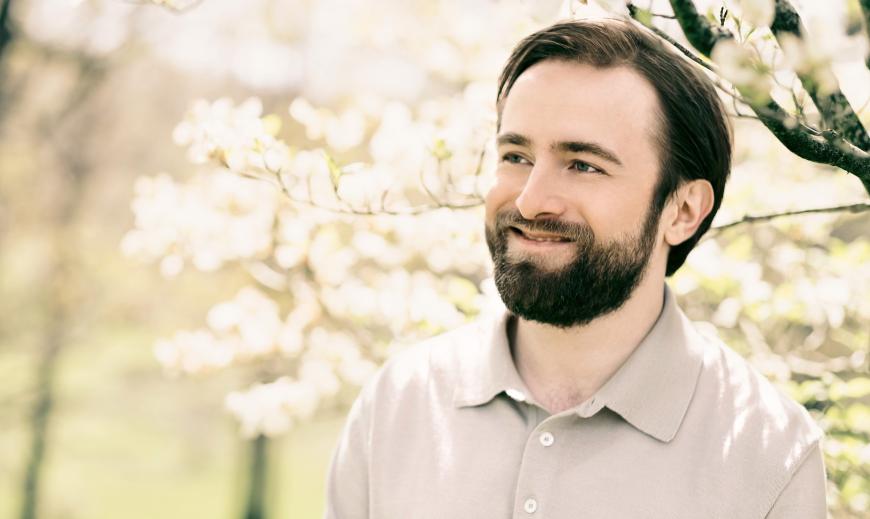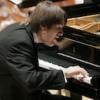
In the opening measures of his Sunday, Nov. 19 recital at Davies Symphony Hall, pianist Daniil Trifonov sat all but motionless before the Steinway keyboard. Only his hands stirred, and those not very much. It was as if he were meditating on, as much as playing, the Allemande of Jean-Philippe Rameau’s Suite in A Minor. Over a pensive utterance of the movement’s theme, every ornament seemed to have a purpose, a carefully considered necessity. Minutes into what would be a capacious two and a half hours of music, Trifonov had captured his listeners by stealth, by the focused stillness of his performance.
The Rameau went on to contain multitudes, from the quizzical tilt of the pianist’s Courante to the assertive clarity and brooding retreat of his Sarabande to an elegantly poised Fanfarinette and the glittering firepower of the closing Gavotte’s six bravura “doubles,” or variations. By then, Trifonov was hunched low over his furiously busy hands, his concentration now dialed in close-up.

Presented on the San Francisco Symphony’s Great Performers Series, the 32-year-old Russian virtuoso moved on from Rameau to Mozart and Felix Mendelssohn in the first half of an organically planned program. After intermission came Beethoven’s intense and sprawling Piano Sonata No. 29 (“Hammerklavier”), followed by two choice, contrasting encores.
Through it all, Trifonov projected a serious air, stiffly darting on- and offstage between numbers, his long hair at times shrouding his face, as if the hardest thing he had to do all night was cross the stage. He was right to get back to business without breaking the flow. The recital had a kind of narrative arc, with enriching echoes and responses. The Rameau suite, in a sense, set the terms.
In his demure approach to the Allegro of Mozart’s Sonata No. 12 in F Major, the pianist seemed to recall the reflection and reserve of the Rameau’s earlier movements. Later, the rapid, silvery right-hand runs and rhythmically decisive left-hand accents in Mozart’s last movements reminded listeners of how fleet and flashy things got at the end of the Baroque piece.
The dramatic build and widening expanses of Mendelssohn’s wonderful Variations sérieuses offered a 19th-century take on the ever more elaborate doubles of Rameau’s Gavotte. And if Beethoven’s late, at times unruly “Hammerklavier” seems about as distant as can be from the orderly procession of dances in the Baroque suite, here, too, there was a connection. Like the cross-handed whirl of Rameau’s movement entitled “Les Trois Mains,” the mighty three-voice fugue in Beethoven’s last movement created the intoxicating sense of forces beyond the ken of any single player.
A recital isn’t a syllabus, of course. Each work stood on its own. For this listener, the Rameau and the Mendelssohn were the highlights. The latter’s Variations opened with a solemn statement of the theme, followed by a kaleidoscopic set of 18 innovations on it. Trifonov was fully engaged here, shifting moods, tempos, dynamics, and harmonic emphases with urgency, lucidity, and transparency. The result was a rushing stream of sparkling surfaces and a driving current.
The Mozart and Beethoven, as they should, stood in high relief from each other. In the former, Trifonov favored crisp clarity over all other values, eschewing lyricism perhaps to a fault.
The pianist made the most of Beethoven’s first movement, giving it a propulsive martial pulse present in both the concussive octave chords and the more muted sections. It was in the long middle movements that things felt a little blurry and interior. Some pedaling and a dynamic sameness contributed to a sense of drift. A gripping account of the fugue brought the planned program to a powerful close.
Trifonov offered two splendid postres. The first, all feathery right-hand riffs over a lazy, lilting undertow, was a jazz rendition of Johnny Green and Edward Heyman’s “I Cover the Waterfront” as played by Art Tatum. In the slow movement of Alexander Scriabin’s Piano Sonata No. 3, the pianist mused on the shifting harmonies as if he were reluctant to let them go. And then, in a wistful, flyaway run, they vanished.




